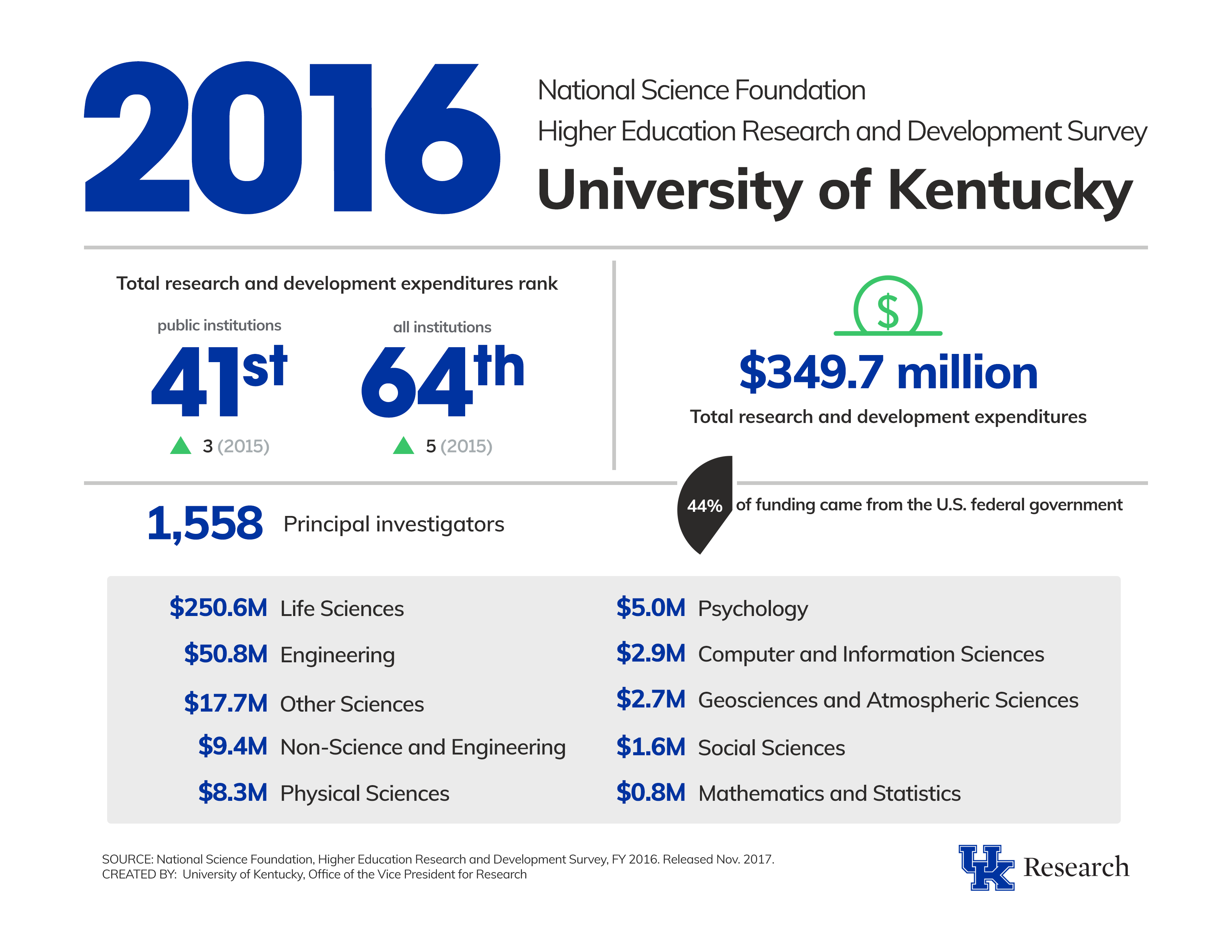How is UK Moving Up Nationally in Research?

The University of Kentucky is continuing its ascent among the top research institutions in the country.
The proof is in the numbers:
- Between 2015 and 2016, UK moved up three rankings among research institutions as measured by the National Science Foundation in the National Higher Education Research and Development Survey.
- UK is now 41st among all public institutions with research and development expenditures totaling nearly $350 million.
- Among all institutions — public and private — UK was 64th in 2016, up five spots in only one year.
Although research funding at the federal level has been flat, UK has seen three consecutive years of growth — an annual growth rate of 5.3 percent in federal funding between 2014 and 2017.
“These rankings reflect something far more important than simply numbers,” said UK President Eli Capilouto. “They speak to our focus on the challenges most impacting Kentucky — cancer, heart disease, diabetes, and a host of other maladies that threaten our Commonwealth. And they speak to the fact that funders know our outstanding researchers are worth the investment.”
The rankings reflect the work of nearly 1,600 principal investigators at UK, most of whom receive federal funding from agencies such as the National Institutes of Health and the National Science Foundation, among others.
Those research dollars are spread primarily among 10 areas of study and focus, including life sciences, engineering, psychology, social sciences and computer and information sciences.
“There is a depth and breadth at UK, reflecting our distinctive position as a flagship, land-grant institution with a major academic medical center on our main campus,” said Lisa Cassis, UK’s vice president for research. “We are harnessing that depth and breadth, moreover, in a focused way on the Commonwealth’s concerns. We know that in solving Kentucky’s challenges, we attack global problems.”
In fact, UK is one of only eight institutions in the country with the full complement of liberal arts, professional, agricultural, and medical colleges and disciplines on one contiguous campus.
That depth and breadth allows researchers and investigators to work together across disciplines and also offers both undergraduate and graduate students distinctive educational and research opportunities in a multidisciplinary and collaborative setting.
At the same time, UK is in the process of investing $2.4 billion in infrastructure across the campus, including a $265 million multidisciplinary research building that will open in 2018 and the continued expansion of a $1 billion health care facility, started in 2004.
Credits
Text by Jay Blanton (UK Public Relations and Marketing).

